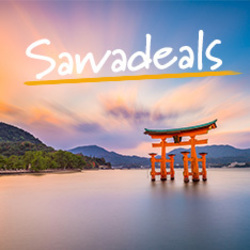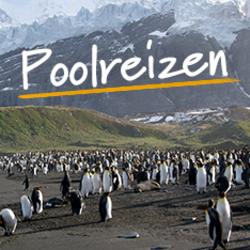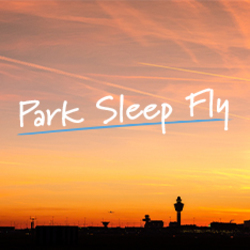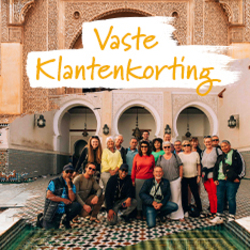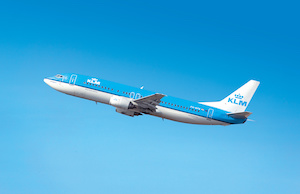Op reis in het najaar
BekijkFood
- Three-day Salar de Uyuni 4WD adventure including the train cemetery, salt flats, Incahuasi (cactus) Island, colorful lagoons, geysers, and ancient volcanoes. Pre-Columbian UNESCO World Heritage Sites of El Fuerte and Tiwanaku Day walk to see the Giant tree ferns and spectacular landscape of Amboró National Park. Visit La Recoleta viewpoint overlooking the 'White City’ of Sucre. Discover the colonial and silver mining heritage of PotosíWalk to the 'Fountain of Eternal Youth' on the Isla del Sol, Lake Titicaca. Afternoon city tour of La Paz including the cathedral and cable car ride. Special departure accompanied by George Kourounis
Activities
- Culture
- Natural Wonders
- Cultural Wonders
-
1
Start Santa Cruz and drive to Amboro N.P
The group flights are scheduled to arrive into Santa Cruz early this morning. Upon arrival we will transfer (approx. 3 hours) to our first hotel located on the border of Amboro N.P. Please note that the road to the entrance to the hotel is unpaved and we´ll be taking a 4x4 vehicles for the last stretch of this journey (approx. 30 mins). After checking into our hotel we will have lunch and afterwards we will have the afternoon at leisure. For those wanting to stretch their legs, we will have some optional walks on offer.Accommodation: Refugio de los Volcanes (or similar)
-
2
Amboro trek; drive to Samaipata
This morning we have an early start and we set out on foot for a day walk (approx. 4 - 6 hours). We will see Giant tree ferns which reach up to an impressive thirteen metres tall and visit a viewpoint which unveils a panorama of sheer sandstone cliffs rising high above an endless expanse of tropical jungle.Amboró National Park is vast, containing some 830 bird species (including Cock of the rocks, Blue horned curassows, hummingbirds, toucans and macaws) - we may see a few of these with the help of our local guides who will also identify some of the endemic plants. Elusive mammals (ocelots, Spectacled bears, tapirs, jaguars and pumas to name a few) also reside within Amboró but we are not likely to see them, especially in the daytime.Afterwards we have an opportunity to shower and have lunch before we transfer to the little-visited laidback town of Samaipata (approx. 1.5 hours) and check into our hotel for the next 2 nights. On route we will visit Las Cuevas Waterfalls, where it is possible to take a quick swim in the clear water if you wish. The evening is free for you to explore the town or rest after this morning’s walk.Accommodation: Hotel Quinta Piray, Samaipata (or similar)
-
3
Morning guided tour of the Pre-Columbian UNESCO site of El Fuerte; afternoon at leisure
This morning we visit ‘El Fuerte de Samaipata’ (or Samaipata Fort), a Pre-Columbian archaeological site of UNESCO World Heritage status, located about 10km outside the town. The hilltop ruins form an excellent vantage point over the picturesque valley and although no standing structures remain, excavations (which continue today) have revealed over five-hundred dwellings. It incorporates buildings from three different cultures: Chanè, Inca, and Spanish. The main site is a gigantic stone slab (over 100m in length), covered in Inca and Pre-Inca carvings of geometric shapes and animal figures, thought to have been of religious/ceremonial significance. We will also visit the museum which contains artefacts from El Fuerte.Accommodation: Hotel Quinta Piray, Samaipata (or similar)
-
4
Return to Santa Cruz; short flight to Bolivia's capital, the 'White City' of Sucre (2,800m)
After breakfast we make our way back to Santa Cruz airport (approx. 4.5hrs drive). In the afternoon we fly to Bolivia’s capital, Sucre (approx. 45min flight) which, with its narrow streets and fine colonial white-washed buildings, is often said to be Bolivia’s most beautiful city; protected by its UNESCO status.Accommodation: De Su Merced Hotel (or similar)
-
5
Morning city tour; afternoon at leisure
After breakfast we’ll embark on a guided tour of the sights, including La Recoleta viewpoint, monastery, and museum of indigenous art, situated at the base of Churuquella Mountain overlooking the city. We’ll visit the main square, ‘Plaza 25 de Mayo’ and adjacent historic Casa de la Libertad (House of Liberty) where Simon Bolivar signed the Act of Independence in 1825. Following on from this we’ll come to the San Francisco Basilica, complete with its ‘freedom bell’, so named as it was allegedly rung so hard to mark Bolivian independence that it broke! A stroll through the manicured Bolivar Park and cemetery are also part of the tour. Accommodation: De Su Merced Hotel (or similar)
-
6
Drive to Potosí (4,060m); walking tour to discover its colonial and silver mining heritage
After breakfast we drive (approx. 3.5 hours) to Potosí. You will notice the increase in elevation as Potosí lies at 4,060m. This afternoon we have a tour of the city, which was the centre of the silver rush in the 16th century. The silver was mined from nearby Cerro Rico (‘rich mountain’) and was predominantly used to make coins but also other objects as it was so plentiful. Potosí developed into a large and prosperous city with thousands of colonial buildings. The consequences for the indigenous miners and African slaves, however, were tragic – some estimates speculate that there were as many as nine million casualties.Accommodation: Hostal Patrimonio (or similar)
-
7
Morning tour to the entrance of the Cerro Rico mine; afternoon transfer to Uyuni
This morning we have a tour to the entrance of the Cerro Rico mine. We will have an explanation about the mine and its importance from a former miner. In the afternoon we drive to Uyuni town (approx. 4 hours driving) with some wonderful landscapes on the way. Accommodation: Hotel Palacio de Sal (or similar)
-
8
Begin a three-day 4WD adventure to discover the incredible landscapes of Salar de Uyuni
We spend today on the salt flats. Pyramids of salt are mounded up and in the dry season the ground is desiccated and hexagonal tiles of salt form as far as the eye can see. There are wonderful photo opportunities and we'll have time today to create some fun pictures. In the middle of the salt flats we come to Incahuasi Island, known for its giant cacti and unusual fossils. This small island on the middle of the salt flats is an amazing sight and we have the chance to walk across it for 360 views from the top. After more photo opportunities, we'll make our way to a spot to watch the sun come down and watch the light cast shadows and reflections on the water. Today's driving time is approx. 5-6 hours.Accommodation: Hotel Palacio de Sal (or similar)
-
9
Second day to discover more sights of Salar de Uyuni by 4WD
This morning after an early breakfast we will head south towards the Bolivian border with Chile. Firstly, we will make a quick stop in San Cristobal town, which is one of Bolivia's largest silver mining facilities. We will not enter the mine but will have a quick explanation of the history of the mine. Afterwards we will drive to the Turkiri Lagoon where we will get to see a variety of local flora and fauna (mainly birds). We will continue heading south with beautiful sights of the Ollagüe Volcano until we arrive at the lakes of Cañapa, Hedionda and Honda. Flamingo breeding grounds are found here and we’re certain to see flocks of them at the lagoons, as well as possibly vicunas and Andean geese. Before we arrive at our hotel for the night, we will drive to the Siloli desert and view the Mountain of seven colours at the national park `Eduardo Avaroa National Reserve'. Today's driving time is approx. 6-7 hours.Accommodation: Hotel Tayka del Desierto/Mallku Cueva Hotel (or similar)
-
10
Third day to discover more sights of Salar de Uyuni by 4WD
A different highlight awaits today as our 4WD adventure brings us into Eduardo Avaroa National Park. Our first stop is at Laguna Colorada, the colours of the lake are a result of algae or the chemical composition. Afterwards we will visit Sol de Mañana geysers (4,926m), meaning 'morning sun'. This sulphur spring field is one of the few places where you can get up close to volcanic (hydrothermal) activity. Across this expanse lie boiling mud lakes and steam pools, and there are several geyser-like features where pressurised steam spouts up to fifty metres into the air! Set against a backdrop of volcanoes and mountains. is Polques Thermal Baths, where those who can brave the cold air temperatures before getting into the warm waters can enjoy a dip. Later we will visit Laguna Verde (green lagoon) and Laguna Blanca (white lagoon).Today's driving time is approx. 8-9 hours.Accommodation: Hotel Tayka del Desierto/Mallku Cueva Hotel (or similar)
-
11
Drive back to Uyuni; fly to La Paz (3,640m); afternoon city tour
After breakfast we will start making our way back to Uyuni airport and fly to La Paz. We leave the amazing landscapes of Uyuni and fly to La Paz (3,640m), the highest administrative capital in the world. We begin the tour by riding the innovative cable car system for views over the entire city. Afterwards we will get back on the bus and head to the main square, Plaza Murillo, in the old town, where we find the Presidential Palace, government congress buildings, and the Cathedral. Next, we visit the Basilica of San Francisco, famed for its mestizo-baroque façade depicting masks, dragons, tropical birds and snakes. Accommodation: Hotel Qantu (or similar)
-
12
Travel to Isla del Sol (4,100m) on Lake Titicaca; walk to our eco-lodge
We drive towards Copacabana, crossing the Tiquina Strait by boat (a short, ten minute ride) and following the shores of Lake Titicaca for much of the journey (the total drive time is approx. 4.5 hours). On arrival at Copacabana we board another boat and travel for an hour to Lake Titicaca’s beautiful Isla del Sol, disembarking at Pillkokaina port where we ascend to the Sun Temple. We will walk (approx. 1.5 hours) to our eco-lodge, which allows us to take in the stunning surroundings; deep blue waters of Lake Titicaca in contrast to the snow-capped peaks of the Cordillera Real. From the lodge the setting sun in the west casts a lovely light across the mountains ahead.Your main luggage will be left on the transport (which we leave at Copacabana) so you need only take an overnight bag to Isla del Sol. We recommend keeping any valuables with you.Accommodation: Ecolodge La Estancia (or similar)
-
13
Free day to explore Isla del Sol; optional boat trip to Island of the moon
Today has been left free to enjoy walking around this beautiful island or we can organise an optional boat trip to another highlight of this area: Moon Island.Accommodation: Ecolodge La Estancia (or similar)
-
14
Walk to the Eternal Youth Fountain; transfer to La Paz; fly back to Santa Cruz
After breakfast we will walk to the Fountain of Eternal Youth before we make the same return journey back (by boat to Copacabana, bus and then a short ferry ride across the Tiquina Strait) and head towards the Pre-Columbian ruins of Tiwanaku, a UNESCO World Heritage Site (approx. 3.5hrs driving). Founded around 1500BC, Tiwanaku became the capital of a massive empire that lasted almost a thousand years, developing into a sophisticated urban ceremonial complex. After lunch we have a guided visit of the site. In the late afternoon we drive approximately one hour and a half to the airport in La Paz and then have an evening flight back to Santa Cruz. Accommodation: Armonia Hotel (or similar)
-
15
End Santa Cruz
For those travelling on a land only basis, the tour ends after breakfast. The group flight is scheduled to depart very early this morning.




